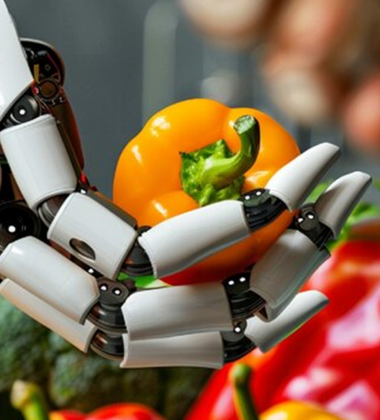In today’s world, the food industry faces increasing pressure to innovate in terms of taste and quality and sustainability. One key area where businesses can make a significant impact is using eco-friendly packaging materials. Sustainable packaging not only benefits the environment but also plays a crucial role in reducing food waste — one of the most pressing challenges of our time.
This article explores how sustainable packaging is instrumental in reducing food waste and provides actionable insights for businesses looking to adopt more eco-conscious practices.
Understanding the Connection Between Packaging and Food Waste
Every year, millions of tons of food are wasted due to improper storage, spoilage, and inefficient packaging. According to research, packaging is often a major contributor to food waste as it affects the shelf life, freshness, and protection of food products. Traditional packaging materials like plastic and Styrofoam are not only harmful to the environment but can also cause food to spoil more quickly due to inadequate ventilation, moisture control, or temperature regulation.
Eco-friendly packaging materials, on the other hand, are designed to preserve food for longer periods, reduce spoilage, and minimize waste. By shifting to more sustainable options, businesses can reduce their environmental footprint and help tackle food waste on a larger scale.
How Eco-Friendly Packaging Reduces Food Waste
1. Improved Shelf Life with Natural Materials
Sustainable packaging materials such as plant-based plastics, biodegradable films, and edible packaging can improve food preservation by providing better moisture control and air permeability. These materials help slow down spoilage, which is crucial for perishable products like fruits, vegetables, dairy, and meat.
For example, seaweed-based packaging has been shown to extend the shelf life of certain foods by creating a protective barrier that reduces moisture loss. This reduction in spoilage leads to less waste, benefiting both consumers and retailers.
2. Protection Against Contamination
Eco-friendly packaging can provide more secure protection against contamination by using non-toxic materials that don’t leach harmful chemicals into food. This ensures that food stays fresh and safe for consumption longer, reducing the likelihood of food being discarded due to contamination.
Materials such as biodegradable coatings or compostable wraps can create an effective barrier that keeps food products protected from bacteria and environmental factors, leading to a reduction in food waste at both the consumer and retailer levels.
3. Reusability and Durability
Unlike traditional single-use plastic packaging, many eco-friendly packaging materials are reusable or designed for better durability, reducing waste and prolonging the life of the packaging. For instance, glass containers, stainless steel wraps, and compostable trays can be reused multiple times, providing more value to consumers and reducing the amount of packaging that ends up in landfills.
By investing in durable, reusable packaging, businesses not only cut down on waste but also contribute to a circular economy where materials are used more efficiently and for longer periods.
4. Encouraging Recycling and Composting
One of the biggest advantages of sustainable packaging is that many of the materials used are recyclable or compostable. This means that packaging waste doesn’t have to end up in a landfill, reducing overall waste accumulation. Furthermore, many compostable packaging solutions break down in a matter of months, making them an environmentally friendly alternative to traditional packaging.
By adopting compostable packaging, businesses can encourage consumers to compost their packaging rather than discard it, promoting better waste management practices at the individual level.
Types of Eco-Friendly Packaging Materials
1. Plant-Based Plastics
Made from renewable plant materials such as corn or sugarcane, plant-based plastics are biodegradable and a great alternative to traditional petroleum-based plastics. These materials break down more easily in the environment, reducing waste and promoting sustainability.
2. Edible Packaging
Edible packaging is an innovative and growing trend in the food industry. Composed of edible ingredients like seaweed, rice, or starch, this type of packaging is fully consumable, meaning there’s no waste generated once the product is used. This packaging is ideal for single-serving products such as snacks, condiments, or beverages.
3. Biodegradable Films and Coatings
Biodegradable films and coatings are often used for wrapping food products such as fruits, vegetables, and baked goods. Made from materials like cellulose, these films are compostable and decompose naturally, reducing waste while keeping food fresh.
4. Mushroom Packaging
Mushroom packaging, made from mycelium (the root structure of fungi), is a completely natural and biodegradable option. It provides excellent protection for food products and decomposes within a few weeks if disposed of correctly, offering an environmentally friendly alternative to plastic and Styrofoam.
5. Glass and Metal Containers
While not always biodegradable, glass and metal containers are highly durable and recyclable. These materials can be reused indefinitely, reducing waste over time. Glass jars or metal tins used for storing food products can be cleaned and repurposed, making them a sustainable choice for packaging.
The Benefits of Sustainable Packaging in Reducing Food Waste
1. Positive Environmental Impact
Switching to eco-friendly packaging reduces the environmental footprint of food products. By cutting down on plastic waste and opting for biodegradable or recyclable materials, companies are helping to reduce pollution and the depletion of natural resources. This results in a cleaner environment and less waste ending up in landfills and oceans.
2. Consumer Trust and Brand Loyalty
As sustainability continues to drive consumer purchasing decisions, companies that adopt eco-friendly packaging practices are more likely to build trust and loyalty among eco-conscious consumers. By demonstrating a commitment to reducing food waste and supporting sustainable practices, brands can strengthen their relationship with customers and enhance their reputation in the market.
3. Compliance with Regulations
As governments worldwide implement stricter packaging regulations, using sustainable packaging materials can help businesses stay ahead of the curve. Complying with packaging regulations reduces the risk of penalties and fines while supporting environmental goals set by policymakers.
The Path to a Sustainable Future
The role of eco-friendly packaging materials in reducing food waste is clear. By choosing packaging that is biodegradable, recyclable, or reusable, businesses in the food industry can play a pivotal role in reducing their environmental impact. The shift toward sustainable packaging not only benefits the planet but also promotes food preservation, reduces waste, and enhances consumer satisfaction.
As businesses continue to innovate and embrace sustainability, eco-friendly packaging will remain a vital tool in the fight against food waste, paving the way for a more sustainable and circular economy.





